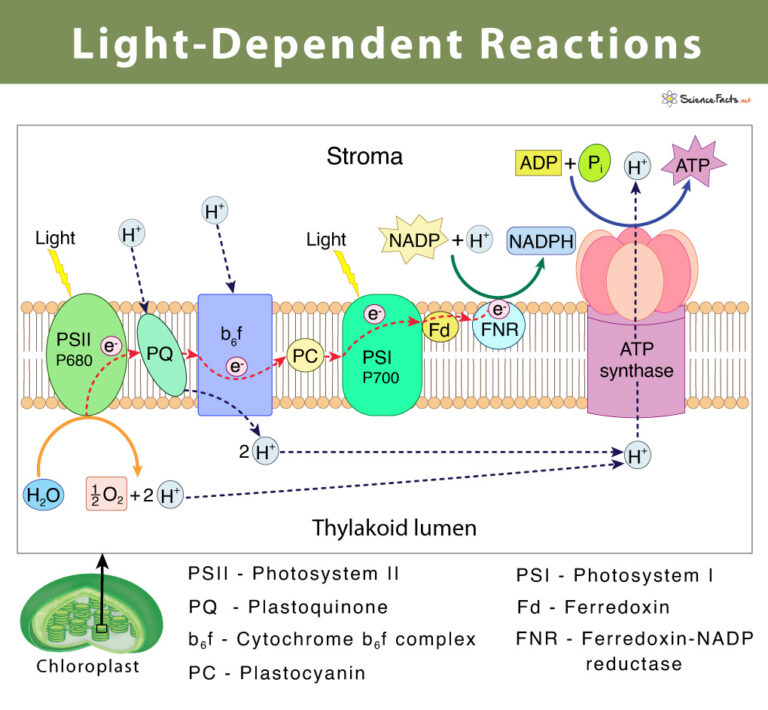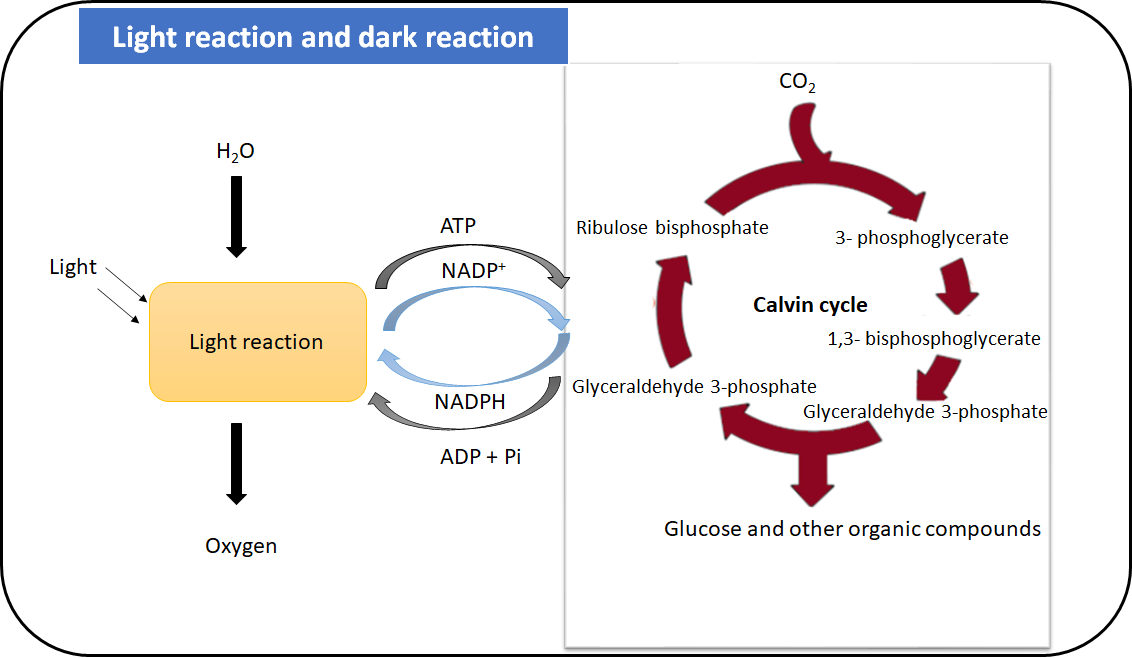Photosynthesis is one of the most critical biological processes on Earth, and the light reaction plays a pivotal role in it. This process transforms light energy into chemical energy, which is essential for life as we know it. Understanding the light reaction is not only fascinating but also crucial for anyone interested in plant biology, environmental science, or renewable energy.
The light reaction is the first stage of photosynthesis, where sunlight is absorbed by chlorophyll molecules in the chloroplasts of plant cells. This energy is then converted into chemical energy in the form of ATP and NADPH, which are used in the subsequent steps of photosynthesis. By exploring this process, we can better appreciate how plants and other photosynthetic organisms sustain life on our planet.
In this article, we will delve into the intricacies of the light reaction, covering its mechanisms, components, and significance. Whether you're a student, researcher, or simply curious about the natural world, this guide will provide you with a comprehensive understanding of the light reaction and its importance in photosynthesis.
Read also:Ulrike Eidonger A Comprehensive Guide To Her Life Achievements And Legacy
Table of Contents
- Introduction to the Light Reaction
- Overview of Photosynthesis
- Structure and Function of Chloroplasts
- How Light is Absorbed
- The Electron Transport Chain
- ATP Synthesis in the Light Reaction
- The Significance of the Light Reaction
- Variations in the Light Reaction
- Environmental Impact and Implications
- Future Directions in Research
Introduction to the Light Reaction
Photosynthesis is a complex process that begins with the light reaction. This reaction occurs in the thylakoid membranes of chloroplasts, where pigments like chlorophyll absorb light energy. The absorbed energy is used to split water molecules and generate ATP and NADPH, which are vital for the Calvin cycle.
What Happens During the Light Reaction?
During the light reaction, several key events take place. First, photons of light are absorbed by chlorophyll molecules, exciting their electrons to higher energy states. These high-energy electrons are then transferred through a series of proteins known as the electron transport chain (ETC). As electrons move through the ETC, they release energy that is used to pump protons across the thylakoid membrane, creating a proton gradient.
This proton gradient drives the enzyme ATP synthase, which catalyzes the production of ATP from ADP and inorganic phosphate. Additionally, the transfer of electrons results in the reduction of NADP+ to NADPH, another essential molecule for photosynthesis.
Overview of Photosynthesis
Photosynthesis is the process by which green plants, algae, and some bacteria convert light energy into chemical energy stored in glucose. It consists of two main stages: the light-dependent reactions and the light-independent reactions (Calvin cycle). The light reaction is the first stage, where light energy is captured and converted into chemical energy.
Why is Photosynthesis Important?
Photosynthesis is vital for life on Earth because it produces oxygen and serves as the foundation of the food chain. The light reaction, in particular, is responsible for generating the energy carriers (ATP and NADPH) that power the Calvin cycle, enabling plants to produce glucose from carbon dioxide and water.
Structure and Function of Chloroplasts
Chloroplasts are specialized organelles found in plant cells and are the site of photosynthesis. They contain thylakoid membranes, where the light reaction occurs, and a stroma, where the Calvin cycle takes place. The thylakoid membranes are stacked into structures called grana, which maximize the surface area for light absorption.
Read also:Ana De Armas A Natural Talent In The Spotlight
Key Components of Chloroplasts
- Thylakoid membranes: Contain pigments like chlorophyll and proteins involved in the light reaction.
- Stroma: The fluid-filled space where the Calvin cycle occurs.
- Grana: Stacks of thylakoids that enhance light absorption.
How Light is Absorbed
Light absorption is a critical step in the light reaction. Chlorophyll, the primary pigment involved, absorbs light most efficiently in the blue and red regions of the spectrum. Accessory pigments, such as carotenoids, help broaden the range of light that can be absorbed and transfer energy to chlorophyll.
Factors Affecting Light Absorption
Several factors influence the efficiency of light absorption, including:
- Light intensity: Higher light intensity generally increases the rate of photosynthesis, up to a certain point.
- Wavelength of light: Different wavelengths are absorbed to varying degrees by chlorophyll and accessory pigments.
- Chlorophyll concentration: Higher concentrations of chlorophyll can enhance light absorption.
The Electron Transport Chain
The electron transport chain (ETC) is a series of protein complexes embedded in the thylakoid membrane. It facilitates the transfer of electrons from excited chlorophyll molecules to NADP+, generating a proton gradient in the process.
Steps in the Electron Transport Chain
The ETC involves several key steps:
- Excited electrons are transferred to the primary electron acceptor.
- Electrons move through a series of protein complexes, releasing energy.
- Protons are pumped across the thylakoid membrane, creating a proton gradient.
- Electrons are ultimately transferred to NADP+, reducing it to NADPH.
ATP Synthesis in the Light Reaction
ATP synthesis occurs through a process called chemiosmosis. The proton gradient generated by the ETC drives the enzyme ATP synthase, which catalyzes the formation of ATP from ADP and inorganic phosphate.
Importance of ATP in Photosynthesis
ATP is a crucial energy carrier in photosynthesis, providing the energy needed for the Calvin cycle to fix carbon dioxide into glucose. Without ATP, plants would be unable to produce the glucose necessary for growth and reproduction.
The Significance of the Light Reaction
The light reaction is essential for photosynthesis and, by extension, for life on Earth. It provides the energy and reducing power needed for the Calvin cycle, enabling plants to produce glucose and oxygen. Understanding the light reaction can also inform efforts to improve crop yields and develop renewable energy technologies.
Applications in Renewable Energy
Research into the light reaction has inspired innovations in renewable energy, such as artificial photosynthesis. By mimicking the processes involved in the light reaction, scientists hope to develop technologies that can efficiently convert sunlight into chemical energy, potentially revolutionizing energy production.
Variations in the Light Reaction
While the basic mechanisms of the light reaction are conserved across photosynthetic organisms, there are variations depending on the species and environmental conditions. For example, some plants have adapted to low-light conditions by increasing their chlorophyll concentration, while others have developed specialized structures to maximize light absorption.
Adaptations to Different Environments
Plants in different environments have evolved unique adaptations to optimize the light reaction:
- Shade-tolerant plants: Have higher chlorophyll concentrations to capture more light.
- Succulent plants: Use CAM photosynthesis to minimize water loss while maximizing light absorption.
- Marine algae: Have specialized pigments to absorb light at varying depths.
Environmental Impact and Implications
The light reaction has significant implications for the environment. As a major source of atmospheric oxygen, it plays a critical role in maintaining the Earth's biosphere. However, factors such as climate change and deforestation can impact the efficiency of photosynthesis, with potential consequences for global ecosystems.
Climate Change and Photosynthesis
Climate change can affect photosynthesis in several ways:
- Increased CO2 levels: Can enhance photosynthetic rates in some plants.
- Rising temperatures: May reduce photosynthetic efficiency in certain species.
- Water scarcity: Can limit the availability of water for the light reaction.
Future Directions in Research
Ongoing research into the light reaction aims to deepen our understanding of this complex process and its applications. Scientists are exploring topics such as the molecular mechanisms of the ETC, the impact of environmental factors on photosynthesis, and the development of artificial photosynthesis technologies.
Key Areas of Investigation
Some of the key areas of research include:
- Molecular structure of photosynthetic proteins.
- Optimization of photosynthetic efficiency in crops.
- Development of artificial systems for light energy conversion.
Conclusion
The light reaction is a fascinating and essential process that powers photosynthesis and sustains life on Earth. By absorbing light energy and converting it into chemical energy, the light reaction provides the foundation for the food chain and contributes to the global oxygen supply. Understanding this process not only enhances our appreciation of nature but also informs efforts to address global challenges such as food security and energy production.
We invite you to share your thoughts and questions in the comments section below. For more insights into photosynthesis and related topics, explore our other articles on plant biology and environmental science. Together, let's continue to learn and grow in our understanding of the natural world!


